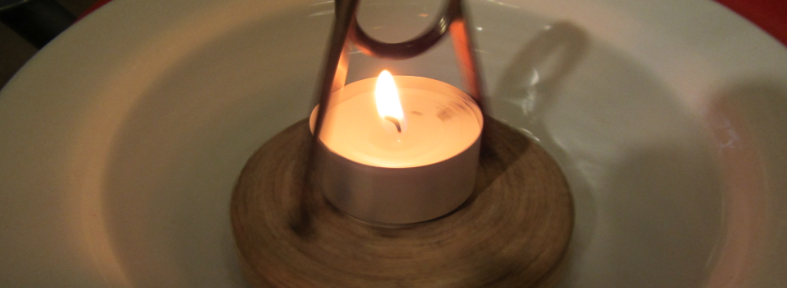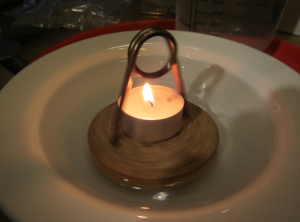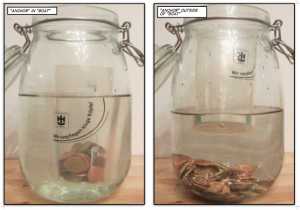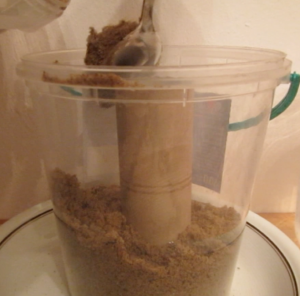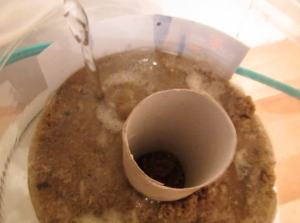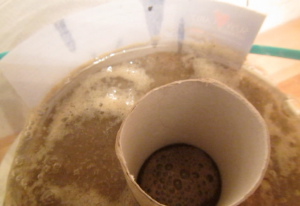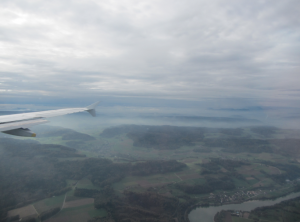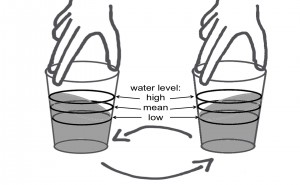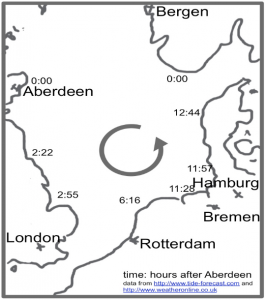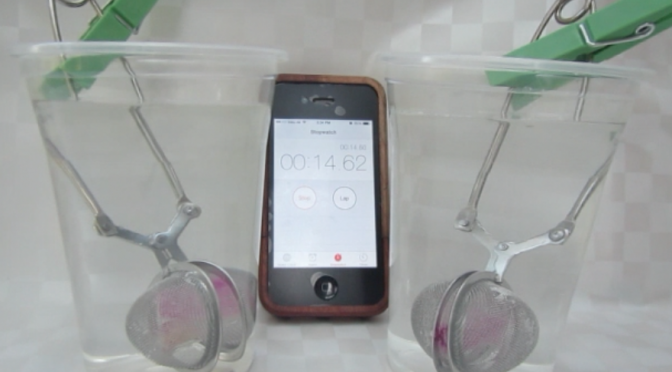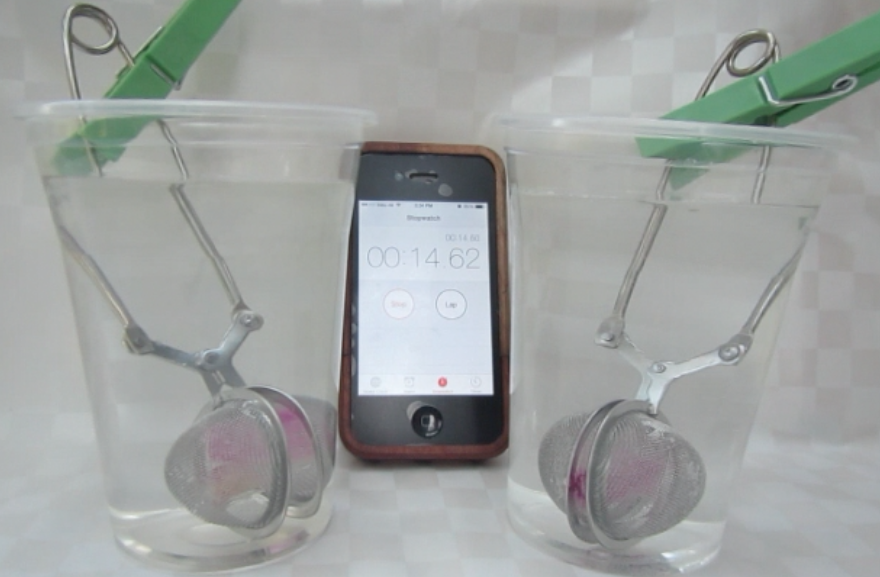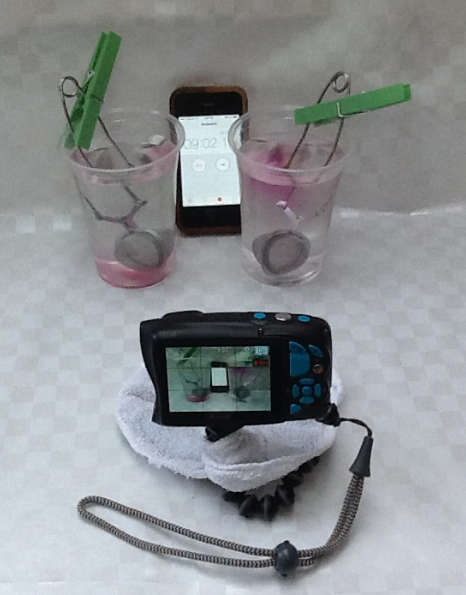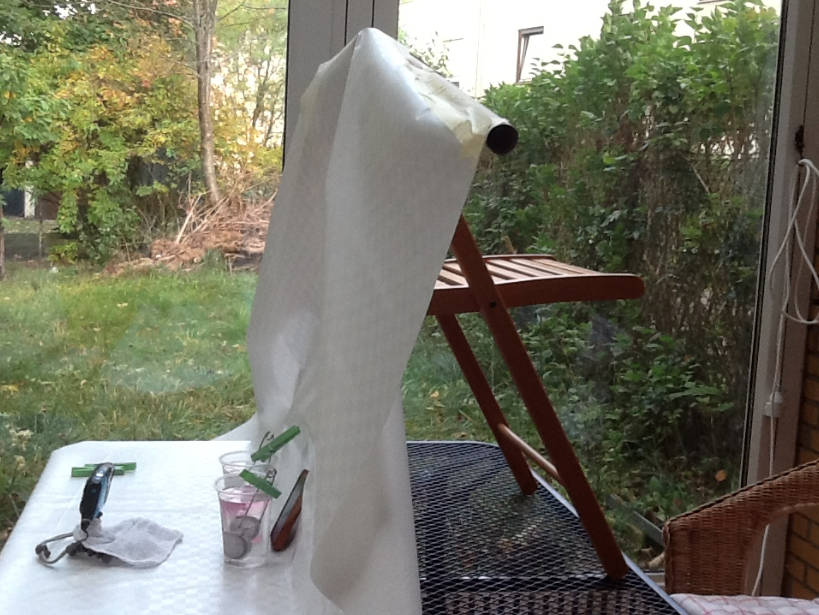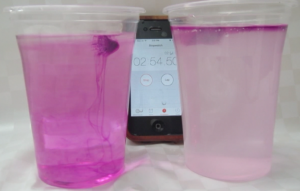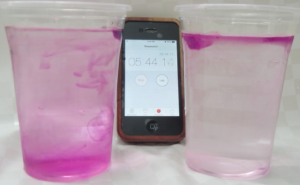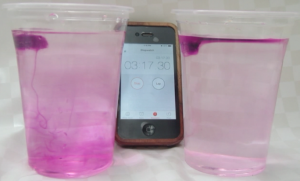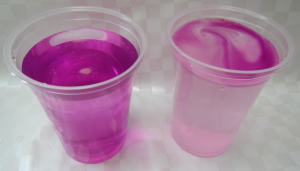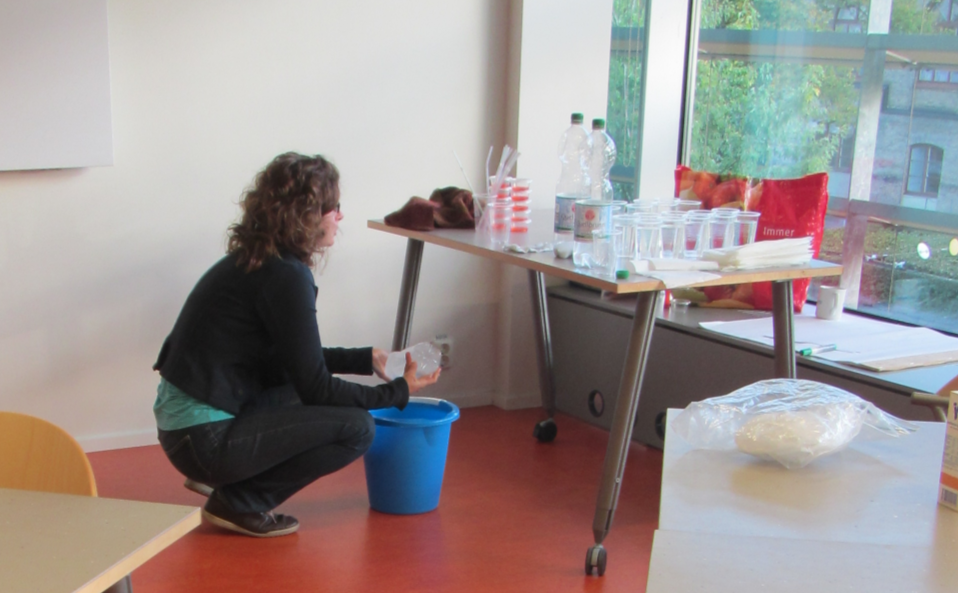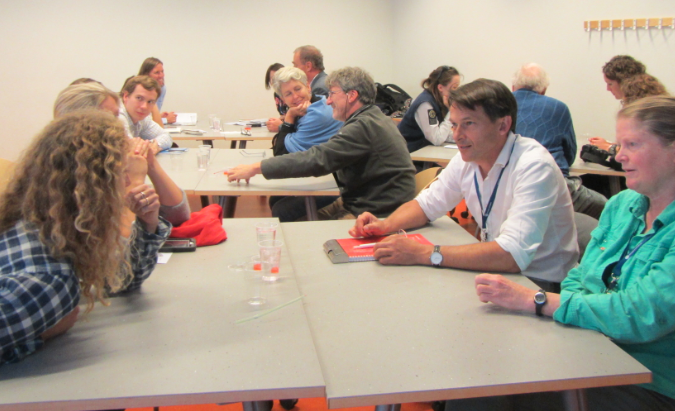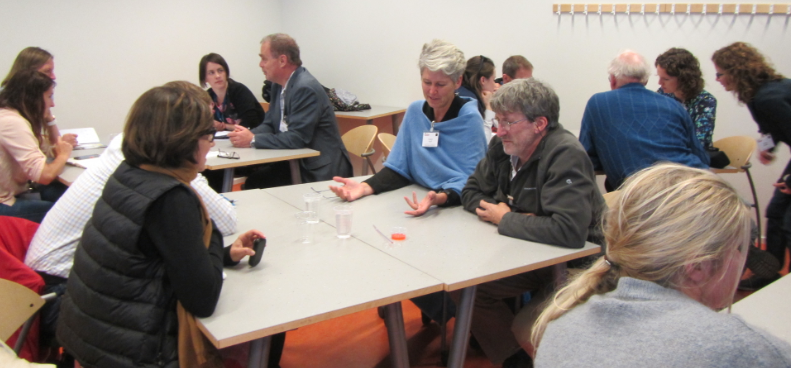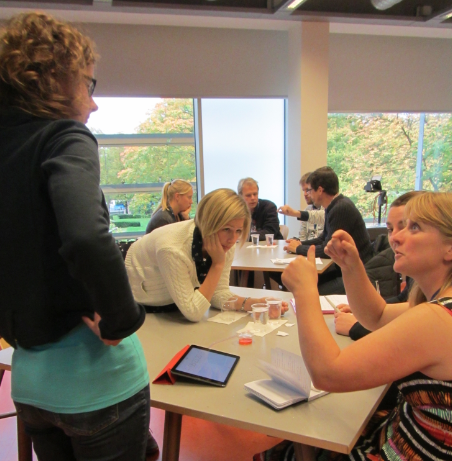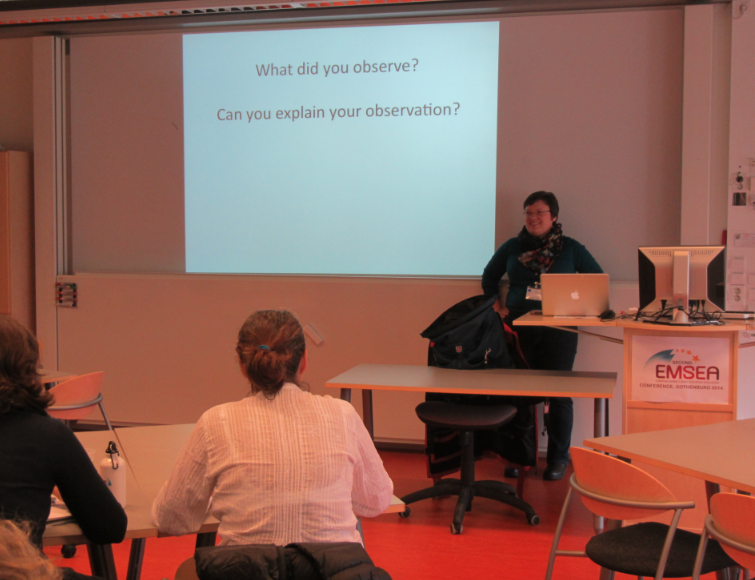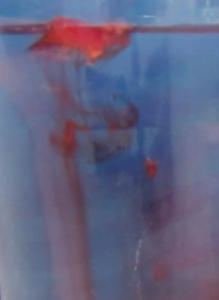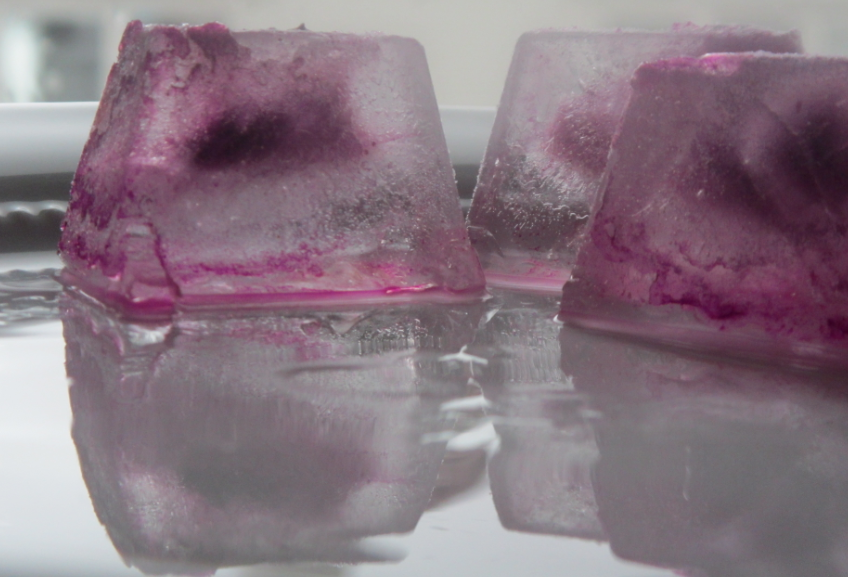How changing the state of water can drive motion.
Somehow over the holidays we ended up playing with a lot of toys related to the change of state of water, or the expansion of air. First, over the next couple of posts, let’s go through the ones dealing with the change of state.
The steam-powered spinning top is super simple. It’s a cork disc with a loop of copper tubing on top. The two open ends of the copper tube come through the cork disk into the water, where they are twisted at a 90 degree angle in opposite directions.
The copper tube is filled with water. A tea candle is placed on the disk underneath the copper tube. As the candle heats up the tube and the water inside, eventually the water will change its state from liquid to gaseous, it dramatically increases its volume: Water at 100 deg C has a density of approximately 0.96 kg/l. Water vapor at the same temperature has a density of approximately 0.6 g/l. Since mass can’t be lost, it has to go somewhere, in this case out at the ends of the tube. Since the increase in volume happens quite suddenly, this leads to a sharp pulse, propelling the spinning top. As the water vapor reaches parts of the tube that aren’t directly above the candle, it cools and becomes liquid again, drastically decreasing its volume, sucking water back up into the copper tube.
This is what it looks like:
